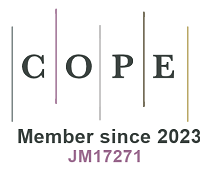Volume 4, Issue 2 (2025) – 1 article
Cover Picture: Microplastic pollution poses a significant threat to global environmental health, particularly within freshwater ecosystems, where these minute particles accumulate and persist. This research endeavors to provide a thorough examination of microplastic contamination within the Brunei River, aiming to elucidate its abundance, distribution patterns, and polymer composition. Sediment and water samples were systematically collected from six locations along the river, employing rigorous methodologies for microplastic isolation and characterization, including microscopy and Fourier-transform infrared spectroscopy (FTIR). The analysis revealed substantial microplastic abundance within both sediment and the water column, with concentrations averaging 1212 particles/g and 850 particles/L, respectively. Notably, transparent microplastics dominated sediment samples, constituting 28% of observed particles, while black microplastics prevailed in the water column, comprising 38% of the total. Through attenuated total reflectance-Fourier transform infrared spectroscopy (ATR-FTIR) analysis, six distinct polymer compositions were identified, encompassing mixed polymers, polyethylene terephthalate, polypropylene, polyamide, high-density polyethylene, and low-density polyethylene. Furthermore, spatial analysis demonstrated a significant correlation between microplastic contamination in sediment and water samples and the proximity to densely populated and urbanized areas along the riverbanks. This relationship highlights the substantial influence of anthropogenic activities on pollution levels within these ecosystems. These findings underscore the critical need for targeted interventions to address microplastic pollution in riverine environments. Implementing sustainable waste management practices and enforcing robust regulatory measures are essential steps to mitigate this growing environmental challenge and protect both ecological integrity and human health.
view this paper 







